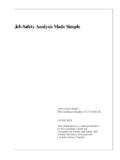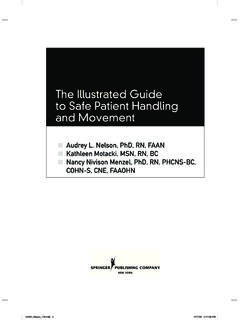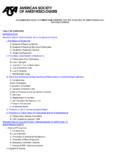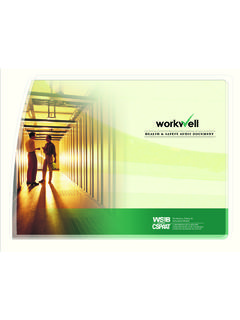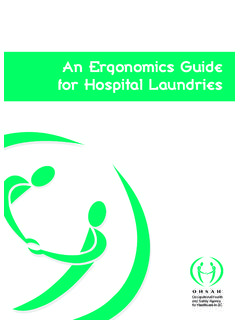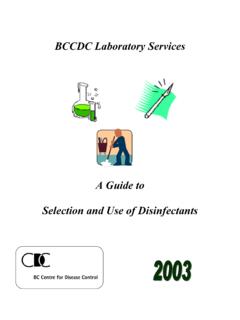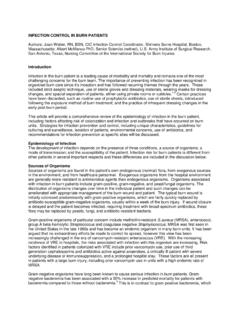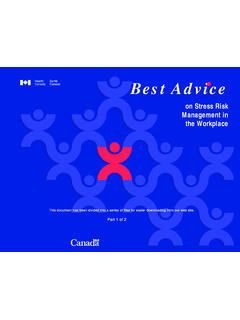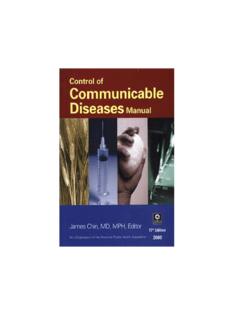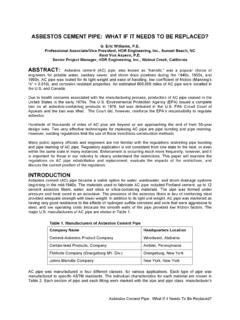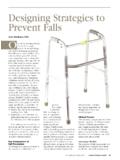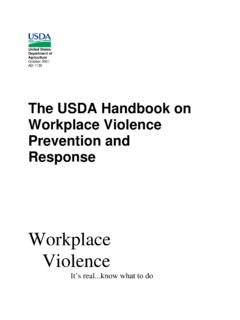Transcription of Slips/Falls From Height Standard Operating Procedure (SOP)
1 preventing Falls in Industrial Workplaces 9 Slips/Falls From Height Standard Operating Procedure (SOP) Slips, Falls From Height Standard Operating procedures preventing Falls in Industrial Workplaces 10 Sample: Standard Operating procedures Tasks/Process: Slips/Falls FROM Height Department: Prepared/revised by: Approved: Supersedes: Date Issued: Purpose The purpose of this Procedure is to provide a protocol for the creation of procedures /practices to ensure that persons will not be injured or harmed by falling from heights.
2 It is also intended that this Procedure will assist the firm in ensuring compliance with the Occupational Health and Safety Act and the Regulation for Industrial Establishments ( 851). Scope The application of this Procedure is intended to cover: fall arrest/ fall restraint systems scaffolds ladders mobile access platforms access/egress on machinery This Procedure is applicable to all employees and contractors associated with the firm. Responsibilities The health and safety coordinator: is responsible for ensuring that work sites have been assessed to identify where the potential for Slips/Falls from elevation exist; is responsible to establish a team of qualified persons to determine the best means of controlling exposures to Slips/Falls from elevation as per specific situation (the team should consist of a minimum of the maintenance manager, department supervisor and the worker).
3 Will develop procedures /practices for those activities and equipment identified and to be used in controlling this potential exposure; is responsible for maintaining all records associated with this SOP (a safety coordinator with fall protection responsibilities, must have the knowledge in maintaining a fall protection program including; selection of equipment, inspecting equipment, Procedure writing, emergency rescue procedures , and training employees). Slips, Falls From Height Standard Operating procedures preventing Falls in Industrial Workplaces 11 The supervisor: will actively participate in any team identified as needed to develop practices/ procedures for fall protection associated with his/her department; will ensure that all fall protection procedures /practices are being adhered to by all workers within his/her department; will ensure that all workers involved in the fall protection procedures / practices have been adequately trained.
4 Will respond immediately to all identified substandard condition, hazards, defects, or noncompliance to the fall protection procedures /practices. The worker: will participate in any team identified as needed to develop practices/ procedures for fall protection as requested; will inspect all pieces of equipment as required by the fall protection procedures /practices; is required to record the findings of all equipment inspections; will report immediately to the supervisor any identified defects, hazards, substandard conditions or noncompliance items associated with the fall protection procedures /practices to his/her supervisor.
5 Will abide by all fall protection practices/ procedures . Procedure Priority will be given to eliminating the need to work at heights. This can be done by engineering out the need to do the work at heights, or contract out the work to qualified, competent, knowledgeable persons. Those tasks that cannot be engineered out will be controlled by installing or using the following: permanent walkways with guardrails mobile access platforms/scaffolds ladders/step ladders fall arrest systems/ fall restraint system It should be recognized that certain control measures such as permanent walkways with guard rails are a better form of control than simply using a ladder, and/or a fall arrest system.
6 Controlling the hazard may involve the use of more than one means of control, the basic rule applies that the greater the risk the more controls that should be in place. Once the control method(s) have been determined the team is required to source out appropriate guidelines/ standards /regulations/best practices as determined for that control. (See attached references and guidelines for best practices information) The team shall create a step-by-step Procedure to be used for the defined work incorporating the appropriate references, guidelines and specific to the needs of the specific work.
7 This completed Procedure will be incorporated into the health and safety manual for future reference. Slips, Falls From Height Standard Operating procedures preventing Falls in Industrial Workplaces 12 Provision for Training The health and safety coordinator will ensure that all procedures / practices related to slip/ fall protection will be communicated to supervisors and workers. It is the responsibility of the department supervisor to ensure that all workers affected by the fall protection procedures /practices have been trained in the following: the slip/ fall protection procedures /practices; the use, inspection, maintenance, storage and handling of all related equipment; the hazard associated with working at heights; rescue and emergency procedures ; any other relevant training.
8 Note: fall protection users need both theory and practical training prior to using the equipment on the job. Trainees should be able to demonstrate hands-on competency of all training prior to being required to use fall protection equipment in actual work environments. Control Monitoring All too often controls are put in place in a formal way, but are not carried out or are forgotten. An inventory of the hazard controls for Slips/Falls prevention that are supposed to be in place can be drawn up. A program should be developed to monitor how controls are working in practice.
9 The JHSC will be issued a copy of the results of any tests conducted for this purpose. Slips, Falls From Height Standard Operating procedures preventing Falls in Industrial Workplaces 13 Appendix: General Best Practices Acrophobia is the medical term for the fear of heights, a condition common to many people. A person suffering from acrophobia will be at particular risk if assigned to work in elevated environments. Slip and trip hazards must be recognized and removed. Clean and tidy workplace conditions result in lower accident rates.
10 The company should have a policy that sets out accountabilities and responsibilities for good housekeeping. Flooring should be assessed for slip resistance. Pedestrian routes and circulation areas should be separate from work areas. Changes in floor levels should be identifiable. Use adequate and secure doormats or abrasion strips to prevent slipping. Adequate lighting should be provided for all areas. A Procedure should be developed to quickly deal with liquid contamination on the floor. Appropriate footwear should be worn for the type of process (tread design).
